Determination of Phenol by Gas Chromatography
Purpose
To get information about gas chromatography and determination of phenol content in wastewater by gas chromatography.
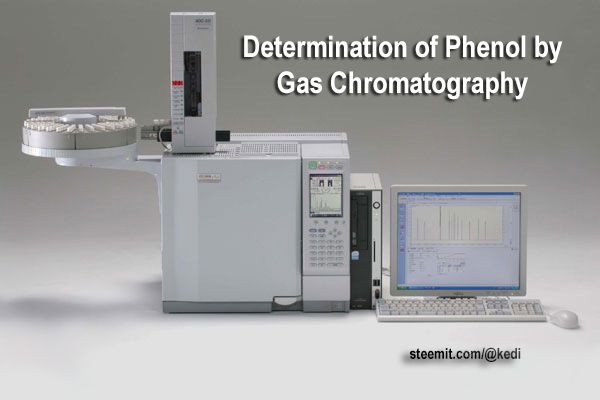
Theoretical Knowledge
While a Russian botanist named Michail Tswett worked with complex plant dyes, started looking for a substance that could separate the dyes. In his 1906 report, he mentioned the fact that separated the calcium carbonate column and plant pigments into several colored bands and described this differentiation technique as chromatography by explaining this by the adsorption of chemical substances.
Chromatography can be defined as an analysis method based on the different adsorption properties of chemical substances. Today, chromatography is used as a versatile method of analysis. It is applied for separation, detection and quantification. Many analytes can be examined by chromatographic methods.
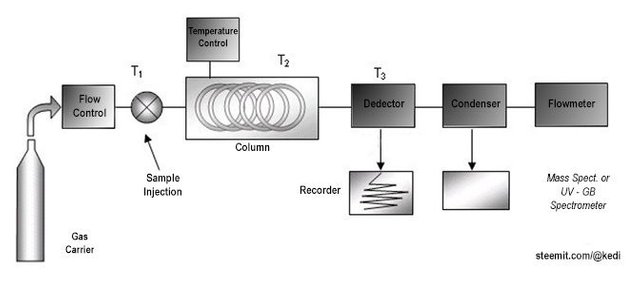
Basic Principle of Chromatography
The mixture to be investigated is dissolved in a gas or liquid phase and is passed through a specially selected support medium in this phase. This support medium creates a stationary phase. The phase carrying the sample molecules is called the mobile phase. The substances in the mixture interact with the stationary phase at different rates. A compound with a higher stationary phase affinity progresses slower than a compound with a lower stationary phase affinity. It is thus separated from other substances.
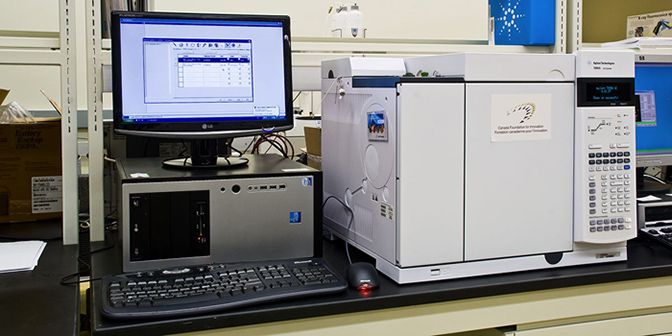
Gas Chromatography (GC)
GC is a chromatographic method which allows separation of a mixture of gaseous compounds by passing over a stationary phase of a mobile gas phase. The components of the mixture are partly dispersed in the gas mobile phase according to their vapor pressures. Compound with high vapor pressure is separated.
In gas chromatography, each component in the sample gives a peak. Retention time is the time between the injection of the sample and the acquisition of the peak maximum at the detector, system is specific for a particular component.
Gas chromatography consists of 6 main parts. These are flow control carrier gas supply, injector, temperature-controlled furnace-mounted chromatographic column, dedector, electrometer and data recorder. The advantages of GC are high resolution, fast discrimination and the possibility of quantitation at the same time.
Gas chromatography was first introduced in 1914 by Martin and Synge to explain liquid-liquid chromatography. In this article, it was reported that the mobile phase could be as gas as liquid.
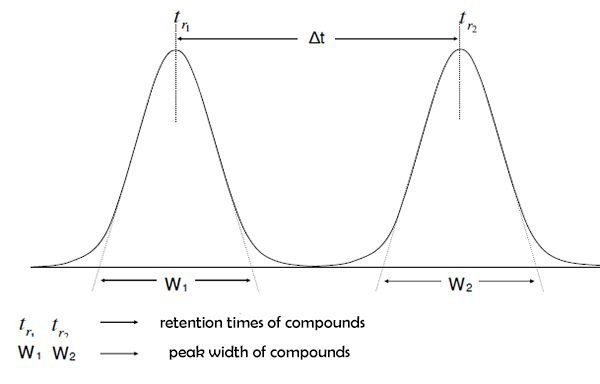
Columns
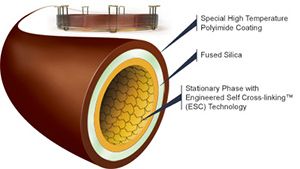
Columns are glass or stainless steel in gas chromatography. The material depends on the substance to be analyzed. Cholesterol and especially halogen-containing samples react with hot metal surfaces. In this case, the use of glass columns is more convenient. Stainless steel columns are cheap and durable and also have good heat transfer properties. Capillary columns are long tubes with fine diameter. It is 0,01-0,03 inches in diameter and 100-500 feet in length. The inner surface of the pipe is covered with a thin layer in liquid phase. Capillary columns have high yield but low sample capacity.
Dedectors
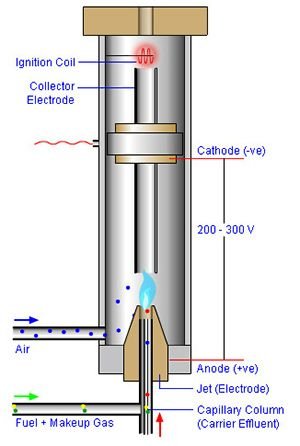
- Thermal conductivity detector is the most widely used detector. The thermal conductivity of the carrier gas is proportional to the amount of material eluted from the column. It consists of two blocks.
- Electron retention detector detecs compounds with affinities to electrons.
- On Flame ionization detector, the material from the column is mixed with hydrogen gas before entering the detector, flame, ionization, electrons are collected and current is measured.
Chromatograms
The shape obtained from the logger is a signal-time curve that specifies the type, amount, and column parameters of the component. The obtained bell shape can be found by measuring the areas of the curves. Standard retention time is calculated. The separation of the obtained peaks, height and width are related to the column. Optimum peaks can be obtained by changing the properties of the column and the carrier gas.
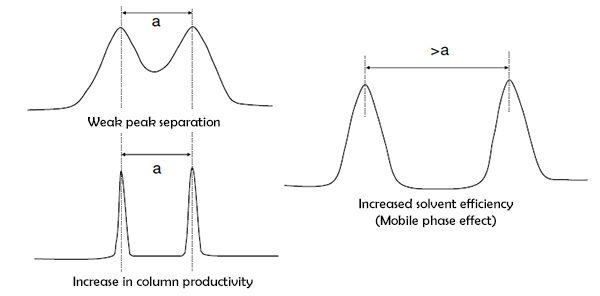
Application Areas
It is used in organic compound analyzes, analysis of plastics, fermentation industry, crude oil fractions analysis, food industry, biochemistry and clinical studies and cosmetics and perfumes industry.
Experimental Procedure
Chromatograms of standard solutions are taken. Retention time is determined from here. Then, in the chromatogram of the sample, the concentration of each component is found by looking at the amount of peaks at retention time.
Results
Gas chromatography was found to be a feasible method in samples containing 1 mg / l dense large concentration phenolic compound. It has been learned that the environment must be kept neutral or slightly alkaline in order to prevent interferences of the compounds with the same retention time as the phenolic compounds and the volatilization of the non-phenolic bases.
[1],[2],[3]
References:
- Dean, J.R.,Carlin, M., “Forensic Applications of Gas Chromatography, CRC Pres, 2013
- Krugers, J. Instrumentation in Gas Chromatography. Centrex Publishing Company-Eindhoven, Netherlands, 1968.
- Gündüz, T., “Kromatografi ve Elektroforez, Gazi Kitabevi, Turkey, 2015
Congratulations @kedi! You have completed some achievement on Steemit and have been rewarded with new badge(s) :
Click on any badge to view your own Board of Honor on SteemitBoard.
For more information about SteemitBoard, click here
If you no longer want to receive notifications, reply to this comment with the word
STOPThis gem of a post was discovered by the OCD team!
Reply to this comment if you accept, and are willing to let us promote your post!
If you accept this, you'll be nominated and the members of the OCD team will vote on whether we'll feature your post in our next compilaton.
You can follow @ocd - learn more about the project and see other gems! We strive for transparency.
I'm mostly curating in #science and am always glad to see quality posts like yours peeking out between the garbage and plagiarism!
Of course I agree! I would be pleased. Thank you :)
Well, this is something I never thought I would ever read about. Learn about something new every day. Congratulations on your OCD selection of this article, @kedi. Very interesting to see the kinds of things people have discovered. Upvoted and following you now. Cheers.
Thank you @mitneb